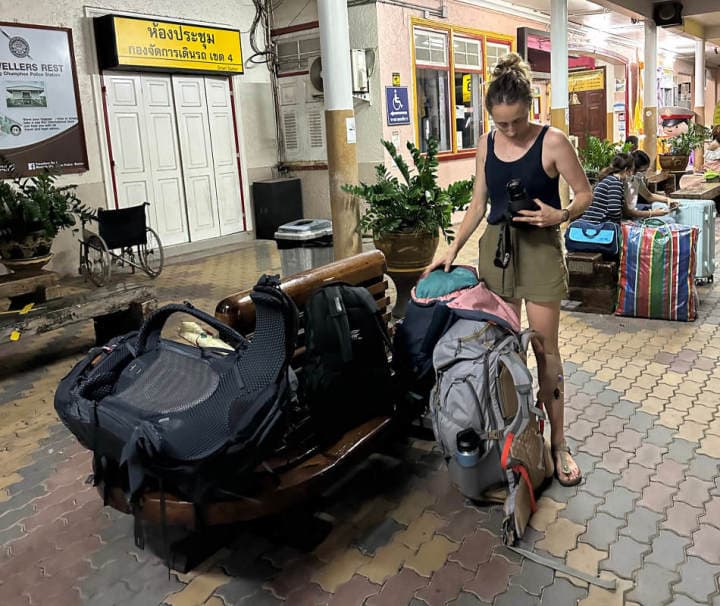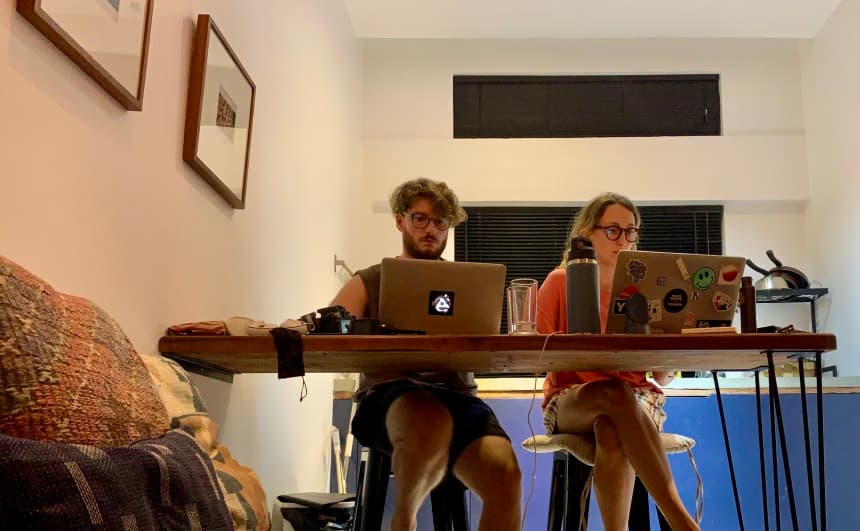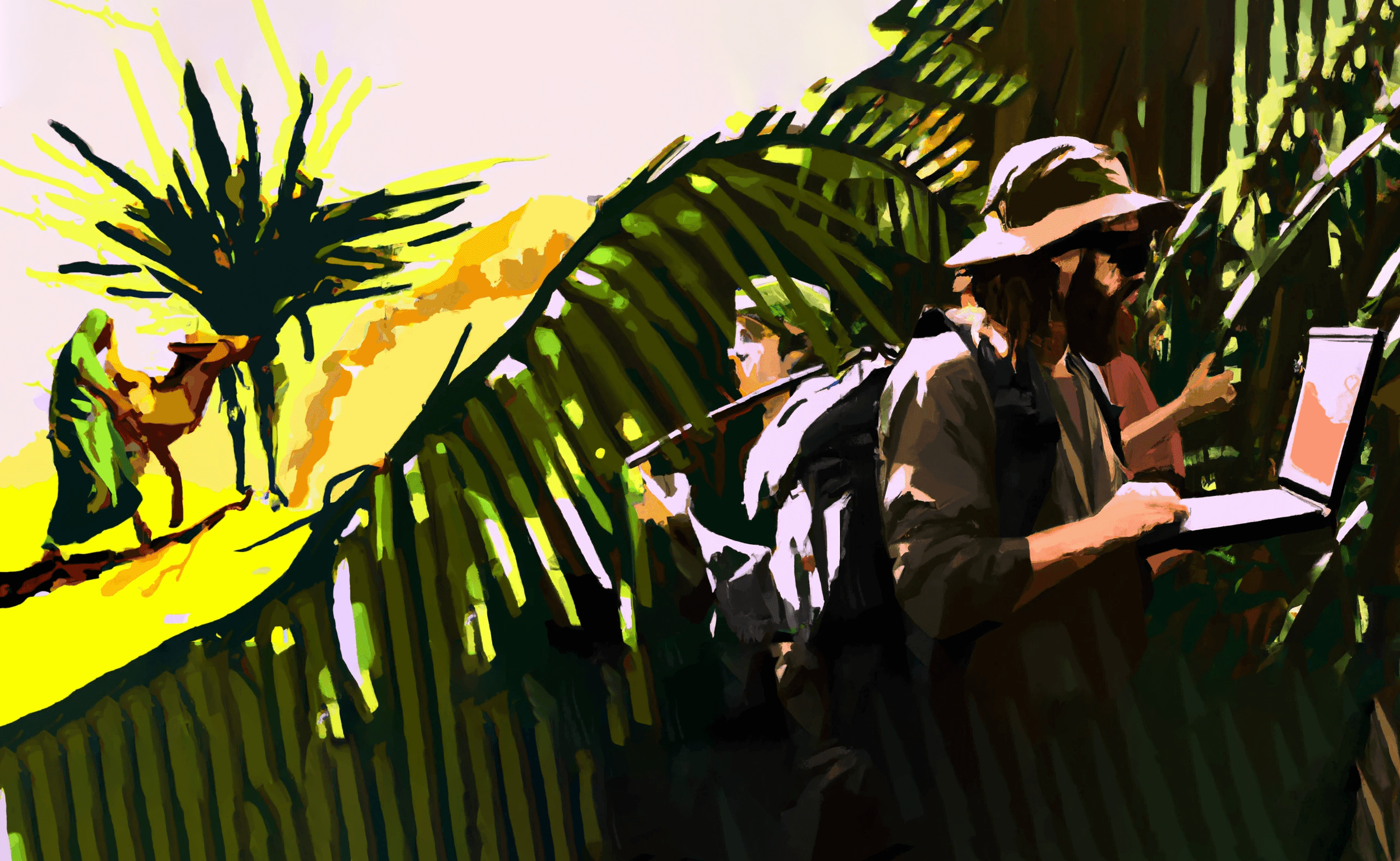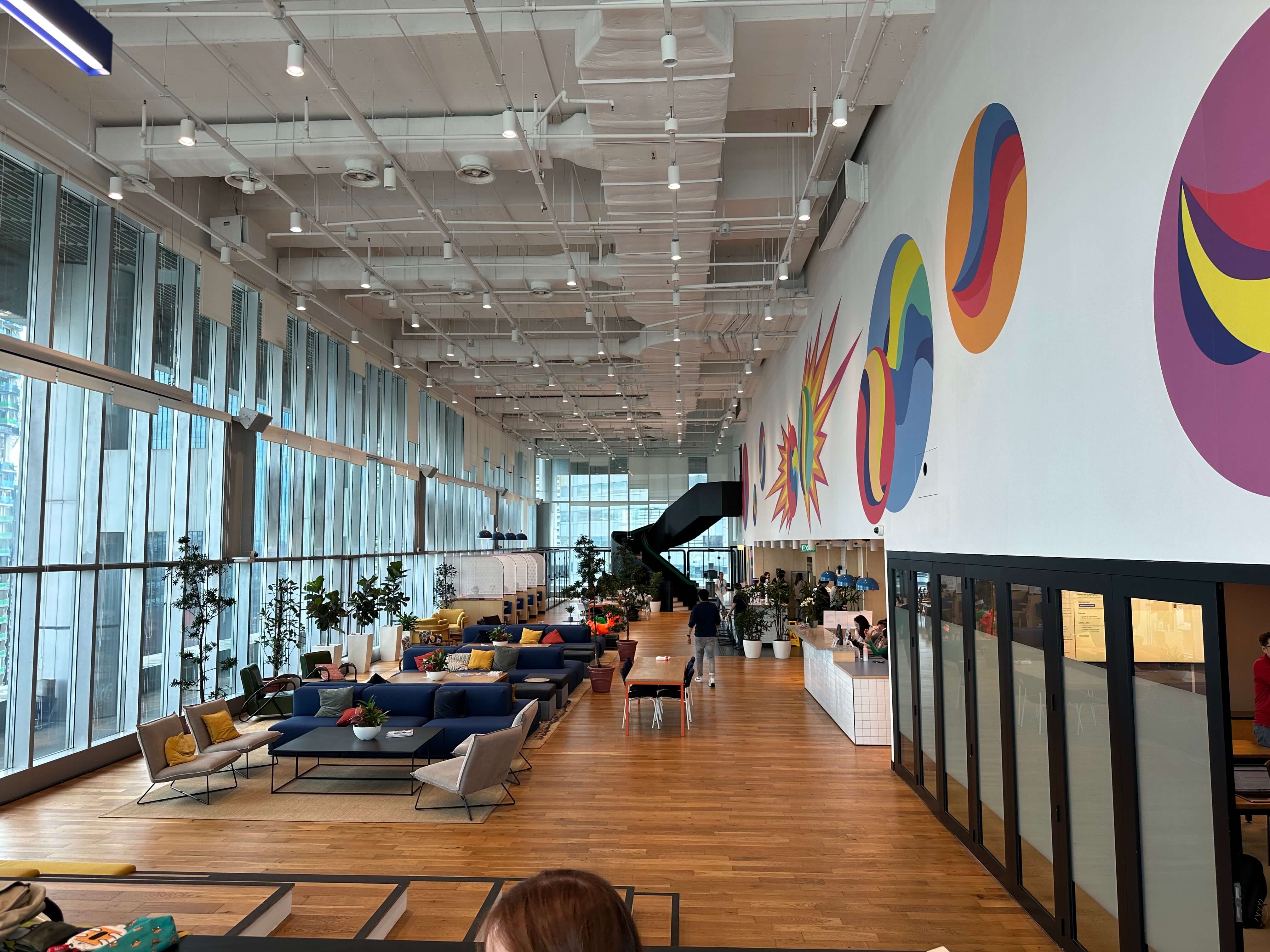The background of nomadism
Before we talk about what a digital nomad is, let’s see what we really mean with the term nomad. The Cambridge Dictionary defines a nomad as: a member of a group of people who move from one place to another, rather than residing in a single location all the time.
The roots of this term go back to Ancient Greek. The word νομᾰ́ς, or nomás. Quoting directly from the Greek etymology, it signifies "roaming, wandering, especially to find pasture" - vividly painting a picture of individuals continually on the move in search of sustenance.
History testifies that this definition was the blueprint of our ancestors' lives. Until 12,000 years ago, every human was a nomad, leading a hunting-gathering existence, which entailed hunting and fishing for food, and gathering wild vegetation and other naturally occurring nutrients like honey.[1]
This Greek definition continues to hold relevance even today. It is believed that the world is home to around 30-40 million "traditional nomads," embodying the same principles of constant movement and search for sustenance, even if they aren't all hunter-gatherers.[2]
In the Western world, there is a regrettable tendency to dismiss nomadic societies as inferior or less developed and as noted by Professor Marie Favereau, this is a gross misrepresentation. Being self-sustaining and depending on the local resources these communities were not only helping the environment by producing their own food but also experts in the surrounding permaculture and weather. As she told BBC News, these societies were highly complex, maintaining political stability through mobility and demonstrating an extraordinary openness to absorbing and integrating different cultures[3]. This dynamism often led to fear and misinterpretation from sedentary societies, viewing them as rebellious, a perception that lingers even today, as seen in the prevalent negative attitudes towards the Roma communities in many Western societies.
Embracing digital nomadism today, we find ourselves in a position to rediscover the spirit of these traditional societies, albeit within the comfort of our modern conveniences.
The beginning of the Digital Nomad
The concept of 'nomadism' took on a modern twist in 1997 when the term Digital Nomad was coined. First mentioned in the book titled The Digital Nomad by Tsugio Makimoto and David Manners, the term was a perfect blend of the primal human instinct to wander and the possibilities offered by evolving technologies.
The authors painted an alluring picture of the future, envisaging how technological advancements would reinvigorate our nomadic tendencies, allowing us to live, work, and exist while constantly being on the move. Their prediction proved to be almost prophetic. In the years that followed, a growing number of individuals embraced this fusion of travel and work, giving birth to a new era of digital nomadism.
Interestingly, the onset of the Covid pandemic acted as a catalyst for this lifestyle. As lockdowns confined people to their homes, many discovered the benefits of remote work. Companies also realised that remote work could enhance productivity, adding fuel to the burgeoning digital nomad trend.
Today, it's estimated that there are roughly 35 million digital nomads globally.[4] And this number is set to soar as more people find appeal in the flexibility and freedom offered by a digital nomad lifestyle.
The nomadic lifestyle is more than just a passport full of stamps
The digital nomad path consists of a comprehensive shift in mindset and philosophy, breaking away from conventional living. As nomads, we prioritise experiences over material possessions, value freedom over routine, and enjoy the richness of other cultures and perspectives.
Remaining receptive to new experiences with a purpose to observe, learn, and appreciate different ways of life is why we travel right? It offers an opportunity to challenge one's own beliefs, question preconceptions, and perhaps even undergo transformative change.
The art of minimalism and adaptability
Embracing discomfort also means living without all the useful gadgets and commodities one has at home, and digital nomads often find themselves missing some of the things which help them recreate their desk space etc. Many of them have narrowed down their living essentials to a backpack of clothes and a rucksack housing their digital devices and a few selected books. There is a certain sense of freedom in letting go of physical possessions, enabling us to centre our lives around experiences and relationships instead. For some, this transition comes naturally, while for others, it is a gradual process that takes time. We haven’t got the complete knack of it yet!

Bea at Chumphon Station
One has to master improvisation and rarely plan too far ahead. Depending on how frequently they plan to travel, they may only be able to sketch out their plans a couple of weeks in advance. And sometimes, they might just fall head over heels for a place and decide to extend their stay, or perhaps they discover that the picturesque town has a serious mosquito problem and decide to make an early exit!
Keep an eye on the seasons! We thought these regions typically have two distinct seasons - wet and dry. This is true, but climate change and things like ‘Slash and burn’ alter the conditions. The wet season can bring relentless rain, but these rainy days, which are hardly ever totally rainy, can actually bring clearer parts of the day or a nice opportunity to get some work done! Wet and dry does not necessarily mean good or bad - you need to do deep research on the exact area before booking anything, just so you know what you will be able to do whilst you stay there. That lush green you see in the photos will not necessarily be there all year round!
The possible hiccups of a nomadic life
Maintaining relationships with friends and family who might be living on the other side of the world is more difficult than it seems. Technology offers a plethora of options for staying connected, however, dealing with different time zones can prove to be quite inconvenient and it may require some extra effort to coordinate staying in touch which is a reliable method to combat homesickness and experience the warmth of loved ones. One misses some important occasions in friend’s lives like wedding celebrations, and new additions to families which sometimes make the distance between you seem tripled.
Another significant challenge is establishing a steady source of income while constantly on the move. Many digital nomads opt for freelancing, which provides a sense of liberation but does not guarantee a stable income. Some months may shower you with abundance, while others may leave you in a more uncertain position. On the other hand, working full-time for a company offers a predictable income but may limit your control over your own time due to meetings and other obligations. Like everything in life, it involves making trade-offs, and it is up to each individual to evaluate which solutions align best with their needs and preferences.
💡 A quick tip: always maintain an emergency fund tucked away in your bank account. That way, you won't have to press pause on your travels just because work's dried up a bit. One thing many people overlook is the importance of understanding personal finance before diving headfirst into the digital nomad lifestyle. Getting your financial ducks in a row can seriously ease your stress levels and help you savour your journey even more. Not the most thrilling subject, I know, but your future self will thank you for it!
A fine balance between work and adventure
In essence, a Digital Nomad is someone who seamlessly blends travel with their work, typically online. Many digital nomads work in IT, creative industries, sales and marketing, and HR. Depending on their line of work and whether they're freelancing or company-bound, one major necessity is a place with reliable Wi-Fi, ideally a co-working space. Along the way, we have even met some radiologists analysing patients’ x-rays.
Co-working spaces serve as more than just a desk and an internet connection; they're a melting pot for like-minded nomads, sharing meals, bouncing ideas and possibly making new friends. And according to Statista[5], with the majority of digital nomads being self-employed, these interactions can offer fresh perspectives, potential partnerships, or even future clientele.

Bea and Davide working at their laptop
However, it's important to remember why you're living this lifestyle in the first place. Yes, work is important, but maintaining a healthy work-life balance is the key to truly enjoying the nomadic experience. After all, the point of being a digital nomad is not just to work from different locations but to experience them. After all, you are not travelling across the whole world just to close yourself in a cafe, or in a co-working space, right?
The impact of digital nomadism
There are pros but also cons to the digital nomadic life. I’m not necessarily talking about the ones which affect us, but the ones which have an impact on the places we visit and the people who live there. Take Portugal and Mexico City for example, where platforms like AirBnb and Vrbo have inadvertently driven up rental costs. This rise in prices, fuelled by high-income digital nomads, has made rent increasingly unaffordable for local people, giving rise to a 'gentrification' effect that can displace locals and upset the community's economic balance.
Regrettably, this isn't the only downside. The influx of digital nomads can lead to overcrowding and the watering down of cultural traditions. As Western influences grow with increased demands for familiar foods and goods, local economies may become increasingly reliant on tourism. As the Covid-19 crisis demonstrated, such dependency can prove unstable and challenging, to say the least.
Given the complexity of this topic, we believe it deserves a dedicated piece. Therefore, we're planning to devote a full article to unpacking some of these issues.
Learning the lessons of traditional nomadism
I would also like to discuss how as Digital Nomads, we need to acknowledge and learn from the enduring tradition of nomadism that laid the foundation for our modern way of life. The nomadic societies of the past exemplified a deep-rooted connection with nature and embodied sustainable travel long before it became a trendy (and overused) buzzword. These pastoral nomads, known for their herding and livestock management, thrived by understanding the ecosystem and its natural cycles, ensuring they utilised pastures responsibly without depleting them beyond recovery.
Just as traditional nomads valued the preservation of their resources for future generations, we too must recognise that our present actions will determine our ability to explore and experience the world in the future. Our digital nomad lifestyle should honour the principles of traditional nomadism, emphasising not just mobility but also respect and harmony with the world we traverse. References:


